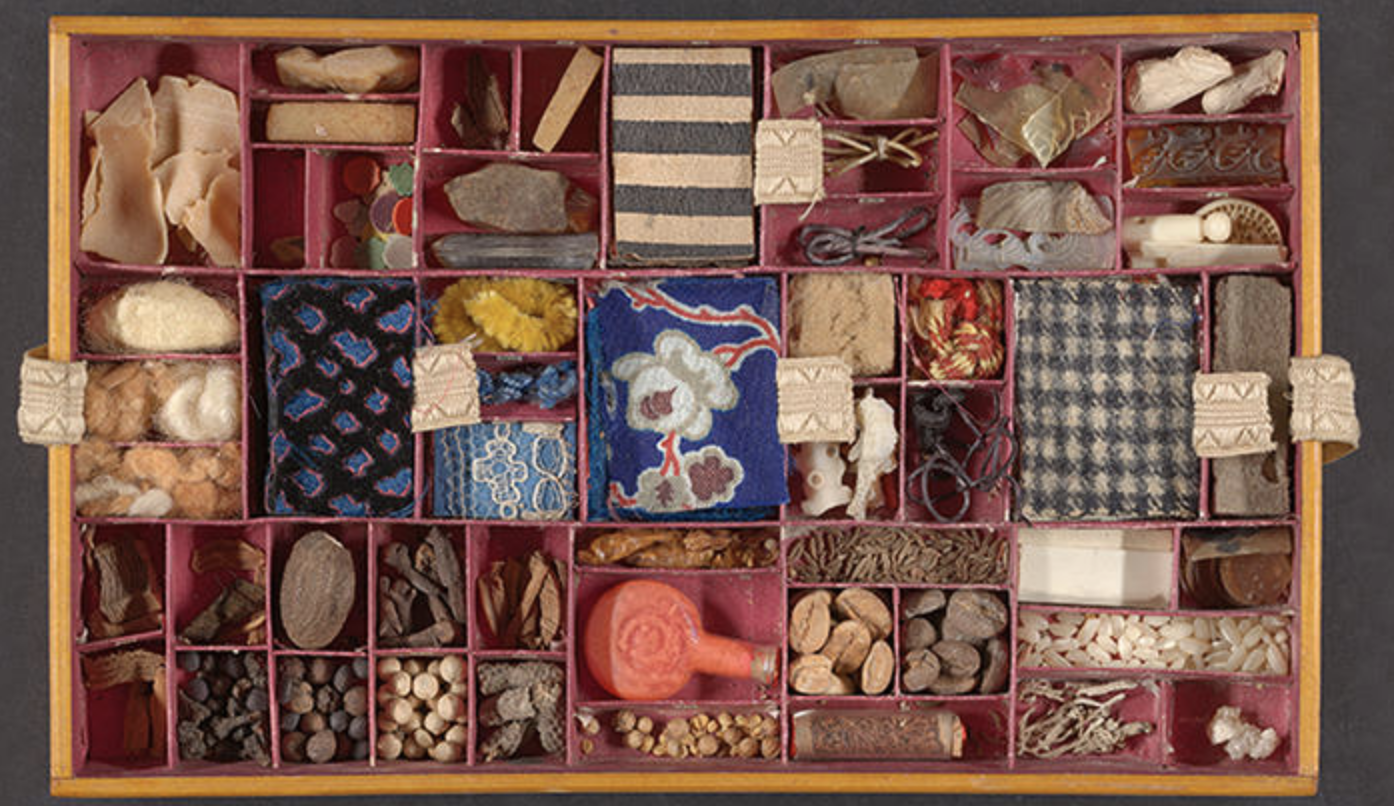
Is a makeshift classroom now part of your at-home existence? Then you might consider this mid-nineteenth-century teaching aid, Specimens of Articles in Common Use, a ready-made curriculum. It was designed to encourage observation skills through direct interaction with everyday objects.
Derived from the theories of Swiss education reformer Johann Heinrich Pestalozzi (1746–1827), this philosophy of object-based, experiential learning was introduced in Britain by Elizabeth and Charles Mayo. They promoted direct observation as the foundation for understanding more complex and abstract concepts.
Elizabeth Mayo first published Lessons on Objects(link is external) in 1830. It guides teachers and students through a series of open-ended questions about commonplace things. Take, for example, a bit of yarn or a grain of rice. What do you observe? How does it feel? What is your relationship to the object? The sensory exercises outlined by Mayo prompted students to perceive, describe, and experiment with the material world.
Preassembled object collections were advertised by various London merchants during the mid-nineteenth century, responding to ideas promoted by Mayo and others. They cost between one and three pounds, depending on their contents. Or, individuals could make their own boxes using published guidelines. The Center’s box contains three stacked trays of mostly natural specimens, divided generally by Animal, Vegetable, and Mineral. Each compartment is numbered and its contents identified in an accompanying manuscript booklet. The complete list of contents is available online(link is external).
These days, many of us are paying closer attention to our surroundings. In thinking about the materials around you more deeply, would you consider putting together a selection of ordinary objects? What marvels would you assemble? Share them with us, if you like, by tagging #YCBARareBooks or email ycba.info@yale.edu(link sends e-mail).
Written by Molly Dotson, Assistant Curator of Rare Books and Manuscripts, Yale Center for British Art

